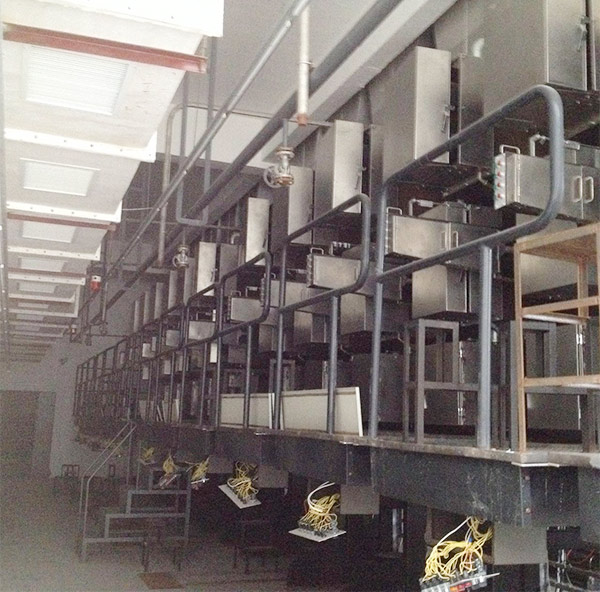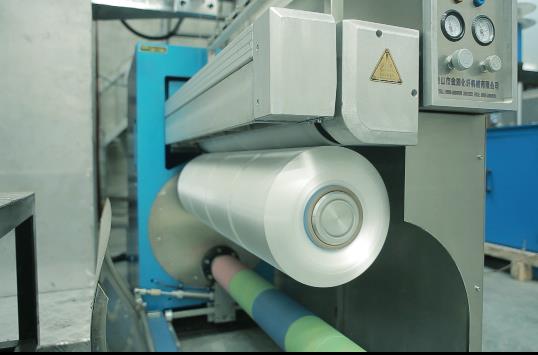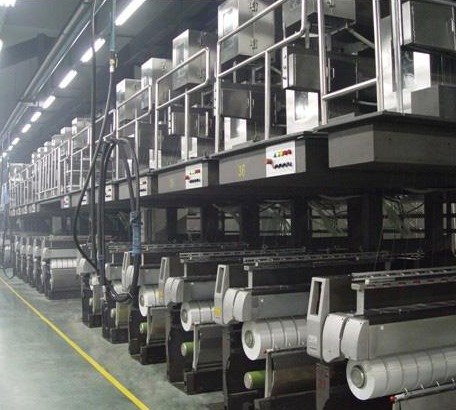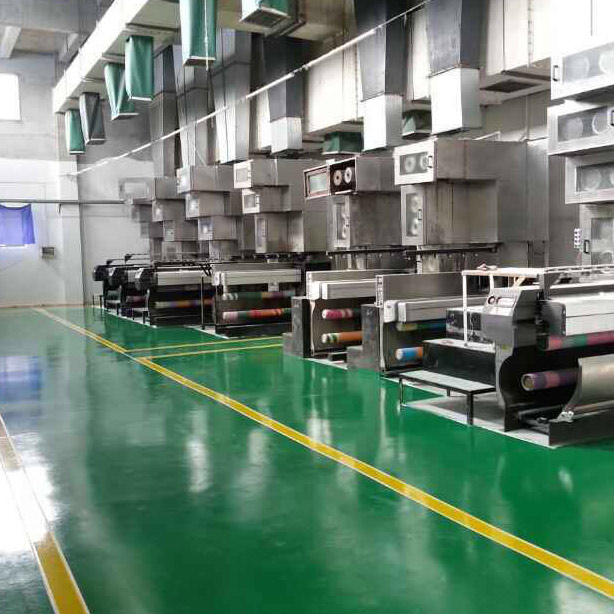- Polypropylene spinning machine
- Polypropylene FDY equipment
- Polyester POY spinning machine
- Polyamide FDY common and high strength equipment
- Polyester FDY equipment
- Polyester high strength equipment
- polyester、Polyamide、 Polypropylene BCF equipment
- Small spinning machine
- All kinds of spinning special parts
- Polypropylene FDY spinning machine is a key equipment for the production of high-performance fibers
- Several silk textile industry renewal projects in Shengze have started construction
- The Winter Solstice marks the rise of Yang energy. In Fubon spinning machines, the Winter Solstice code is revealed, a dialogue of craftsmanship spanning a thousand years
- The establishment conference of Guangzhou Modern Textile and Garment New Quality Productivity Research Institute and the co-construction conference of the textile industry innovation ecosystem were held
- The key points of control in the polypropylene FDY spinning machine process and their relationship with quality

- Contact:Mr. Huang Guofu
- Cel:0086-13901505556
- Fax:0086-519-83341119
- Email:czfb5556@126.com
- Add:No. 288-8 ChangLi Rd, Huangli Town, Changzhou, JS PRV.
On October 25, in the 11th history.the textile expo opening ceremony, China textile information center and the China textile town, suzhou city, jiangsu province, wujiang district city jointly issued the "climate action of history.the textile industry, the white paper" (hereinafter referred to as the "white paper"), the system combed the history.the textile industry development present situation and the green, low carbon development progress, It is clear that the greenhouse gas emissions of the local textile industry will reach a peak in 2029, with a peak level of 12.146 million tons of carbon dioxide equivalent, a plateau period from 2029 to 2035, and a neutralization time of 2058, and the emissions will be controlled below 1.5 million tons of carbon dioxide equivalent. In the future, a modern textile industry system featuring high efficiency, green, recycling and low carbon will be built to achieve high-quality and sustainable development.
The energy consumption structure will accelerate the transition to secondary energy sources
City is located in the Yangtze river delta and the centre of the taihu lake region, located in the Yangtze river delta integration development demonstration area of ecological green core region, has from the raw materials to the terminal brand complete industry ecosystem, is the world's important textile industry base, is from the ancient "silk", and "textile city" to "fashion capital".
According to the White paper, the energy consumption of the textile industry in Shengze is accelerating the transformation to high efficiency, low carbon and clean.
First, total energy consumption showed a slow growth trend. From 2015 to 2019, the total energy consumption of enterprises in the textile industry increased by 140,300 tons of standard coal, with an average annual growth rate of 1.93%. In 2020, due to the impact of the epidemic, the economic development and energy consumption of the industry decreased significantly. In 2021, with the recovery of the economic development of the industry, the energy consumption also recovered to 1.844,800 tons of standard coal, but it was still lower than the level of 2019.
Second, energy efficiency has been gradually improved. Since 2015, Shengze has established and improved the "dual control" system of energy consumption intensity and total energy consumption, and the overall energy intensity of the textile industry has maintained a downward trend. In 2021, the energy intensity of enterprises in the textile industry was 0.34 tons of standard coal/ten thousand yuan, 14.85% lower than that in 2015.
Third, the structure of energy consumption has been continuously improved, and energy consumption is accelerating the transition from primary energy to secondary energy. In 2021, the total coal consumption decreased to 560,300 tons of standard coal, accounting for 30.4% of the total energy consumption of the cluster, down 13 percentage points from 2015. The combined consumption of electricity and heat accounted for 66.3% of the cluster's total energy consumption, up about 9 percentage points from 2015.
It is understood that emissions from Shengze's textile industry mainly come from the consumption of electricity, raw coal and heat. From 2015 to 2021, the total proportion of GHG emissions generated by the three types of energy consumption in the total emissions of the cluster remained above 96%.
In terms of industrial distribution, in 2021, the emissions of textile industry and chemical fiber manufacturing industry accounted for 61.43% and 38.42% of the cluster proportion, respectively; In terms of the distribution of enterprises, the sum of emissions of 38 enterprises accounted for more than 80% of the proportion of the cluster, showing a strong clustering of emissions.
"White Paper" analysis, Shengze textile industry greenhouse gas emissions showed a "first rise and then decline" total emissions, strong aggregation trend. The total emissions of the textile industry in Shengze increased to 6.834 million tons of carbon dioxide equivalent in 2019, which decreased significantly in 2020 due to the impact of the pandemic, and rebounded to 6.056 million tons of carbon dioxide equivalent in 2021 as the economy recovered. At the same time, the trend of emission intensity is opposite to the total emission, that is, it decreases first and then increases, and the emission intensity is about 1.21 tons of carbon dioxide equivalent / 10,000 yuan in 2021.
The local textile industry will reach its carbon peak in 2029
According to the White Paper, based on the results of scenario analysis, considering the national "double carbon" target, local peaking task requirements and the development plan of the textile industry in Shengze, it is suggested that the textile industry climate action path can be selected as the enhanced action scenario path.
Under this scenario, the climate action target and path of the textile industry in Chengze are clear: the greenhouse gas emissions of the textile industry will reach the peak in 2029, the peak level will be 12.146 million tons of carbon dioxide equivalent, the plateau period will be 2029 to 2035, and the neutralizing time will be 2058, and the emissions will be controlled below 1.5 million tons of carbon dioxide equivalent.
To achieve the above goals, Shengze should formulate and implement an action plan for green and low-carbon transformation of the textile industry, build a modern textile industry system characterized by high efficiency, green, recycling and low carbon, and achieve high-quality and sustainable development, according to the White paper. Strong measures can be taken to focus on the low-carbon transformation of energy consumption, the construction of a green and low-carbon industrial system, the enhancement of green technology innovation capacity, and the cultivation of green and low-carbon brands.
In order to further serve the green and low-carbon sustainable development of the textile industry in Shengze, China National Textile Council has also set up a Sustainable Innovation Office in Shengze to promote the sustainable development capacity of the textile industry in Shengze and promote the construction of a world-class climate action demonstration zone for the textile industry in Shengze.
- Several silk textile industry renewal projects in Shengze have started construction
- Polypropylene FDY spinning machine is a key equipment for the production of high-performan
- The Winter Solstice marks the rise of Yang energy. In Fubon spinning machines, the Winter
- The establishment conference of Guangzhou Modern Textile and Garment New Quality Productiv
- The key points of control in the polypropylene FDY spinning machine process and their rela
- A Guide for Managers to Break Through: Empowerment Rather than Control: Helping Enterprise
- The 2025 Textile and Garment Innovation Annual Conference and the Gongqingcheng Down Indus
- The technological upgrade of polypropylene FDY spinning machines empowers the production o
- Textile News: Full-chain Efforts + Cross-border Breakthroughs + Talent Foundation - The Te
- The 2025 China Home Textile Fashion Innovation Conference grandly kicked off in Binzhou




